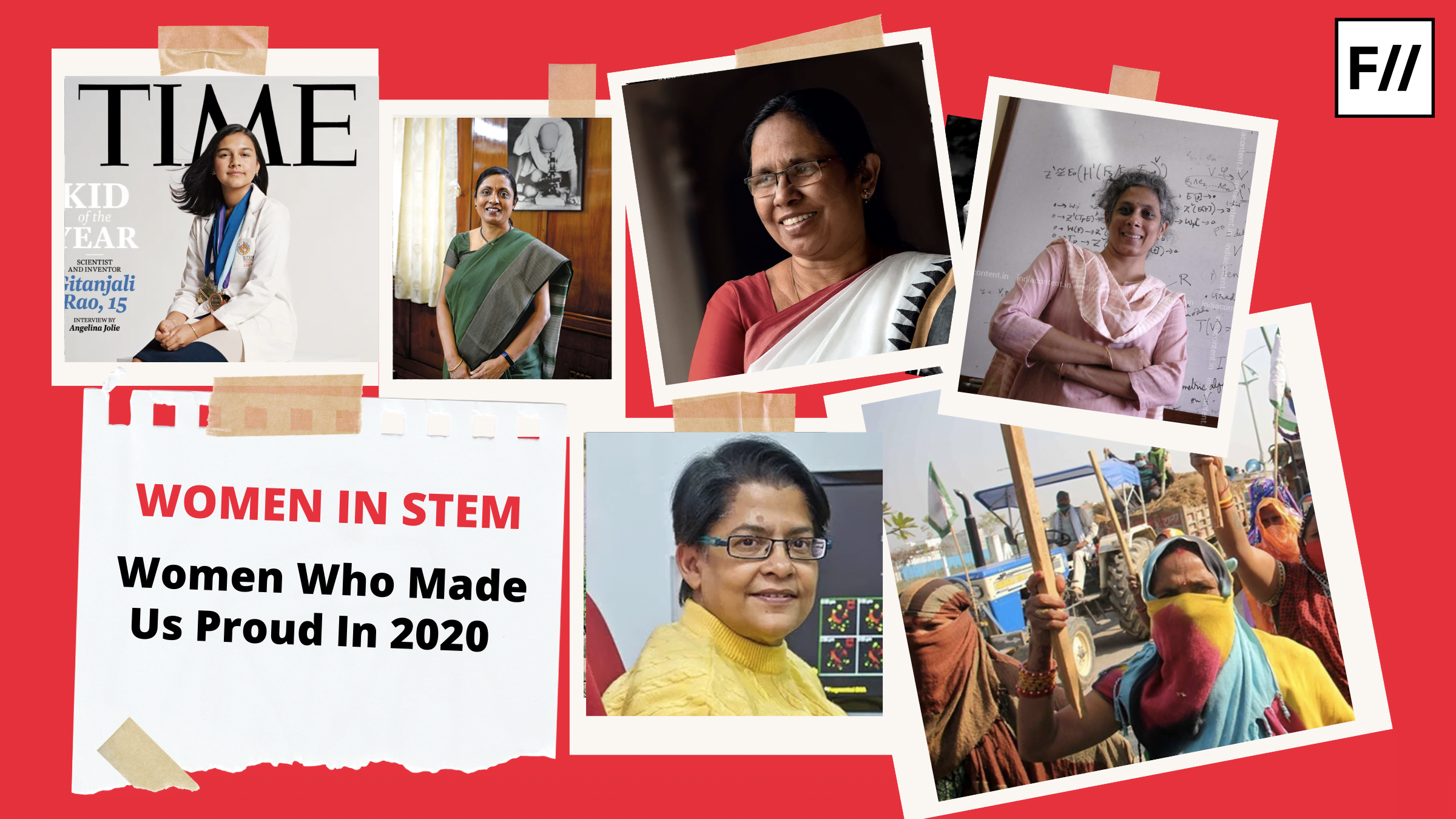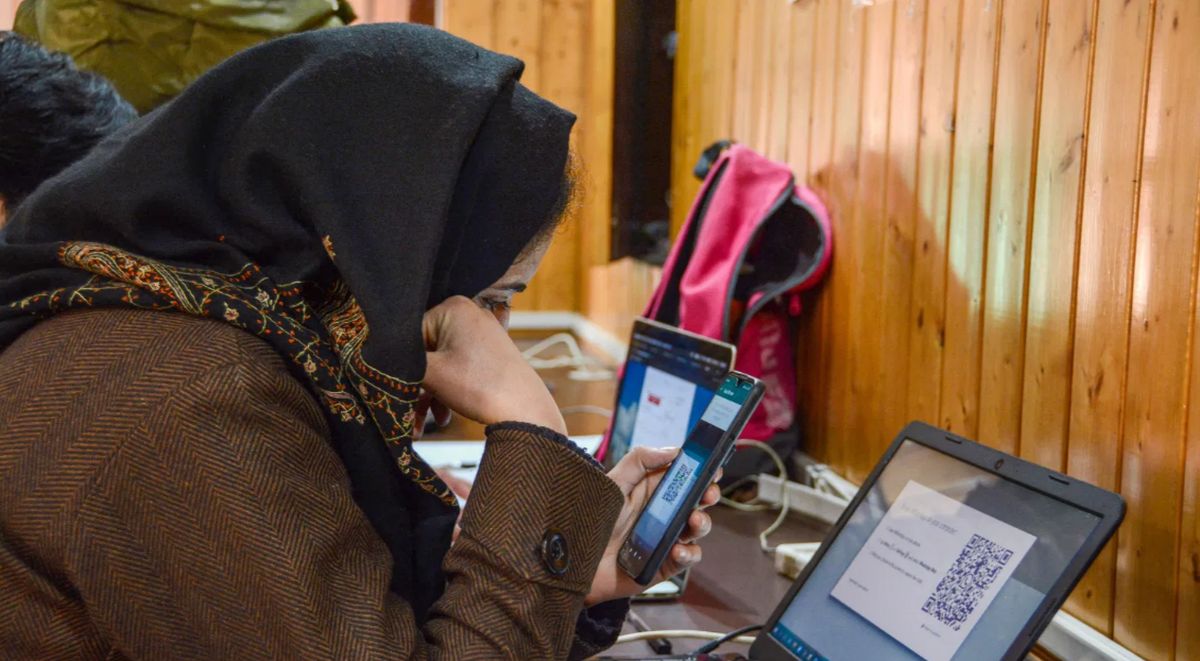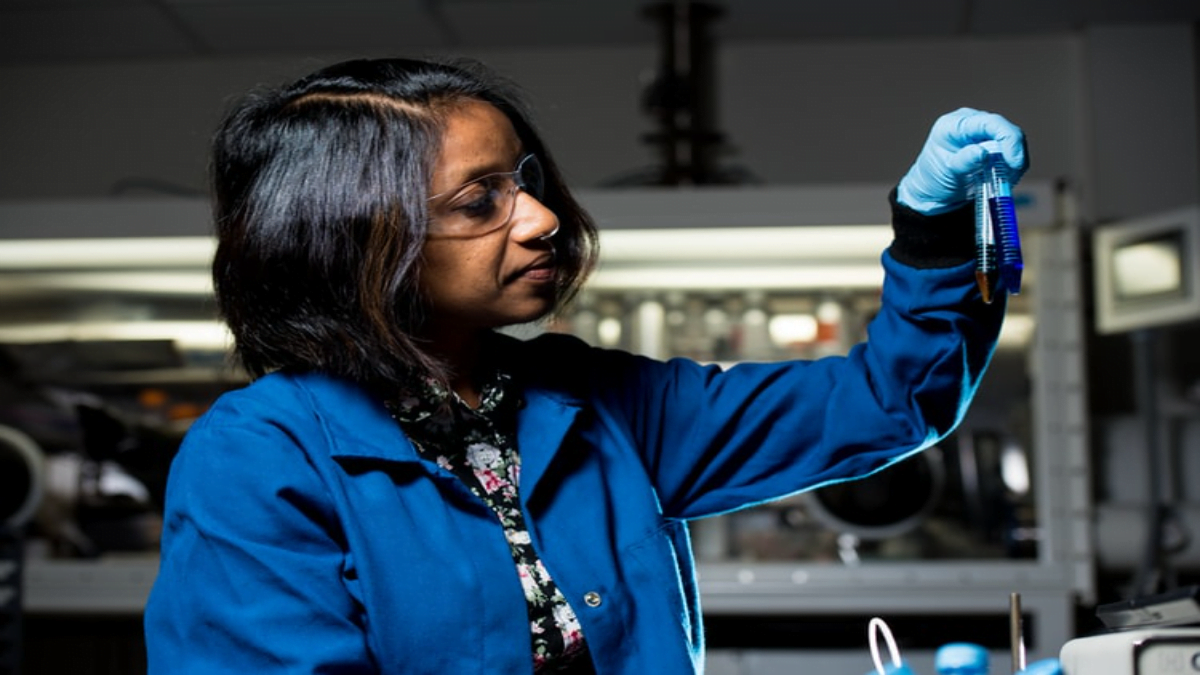Time and again, we have witnessed what are considered conventionally masculine spaces such as science and technology, politics, army, etc. pave way for women. Since the start of the fight against patriarchy, the feminist movement has asserted on equal rights for women and equitable opportunities and access which will facilitate their empowerment. Although gender equitable breakthroughs have happened in fields such as STEM (Science, Technology, Engineering, and Mathematics), it is evident that we still have a long way to go.
This year, especially, saw women at the helm in STEM as deft decision-makers and as harbingers of change. Be it the women farmers protesting against the draconian anti farmer laws, Kerala’s Health Minister K.K. Shailaja teacher taking on the pandemic with her composed temperament and well-thought strategy or the brilliant innovations of the young Indian-American scientist Gitanjali Rao who was featured as TIME magazine’s Kid Of The Year, women made quite the mark in STEM in 2020.
Also read: Women In STEM: In Conversation With Dr Arunika Mukhopadhaya
This year, especially, saw women at the helm in STEM as deft decision-makers and as harbingers of change. Be it Kerala’s Health Minister K.K. Shailaja teacher taking on the pandemic with her composed temperament and well-thought strategy or the brilliant innovations of the young Indian-American scientist Gitanjali Rao who was featured as TIME magazine’s Kid Of The Year, women made quite the mark in STEM in 2020.
- K.K. Shailaja Teacher
K.K. Shailaja Teacher is the current Minister of Health and Social Welfare of Kerala and was named one of the most influential women of 2020 by Financial Times for her leadership and work during the COVID-19 pandemic in Kerala. The former secondary-school science teacher has been praised for her proactive, adept, and confident response at the start of the pandemic, quickly engaging steps like the WHO’s “test, trace, isolate, and support” strategy, stopping all flights into the state on March 23, and containing the first cases to arrive on flights—despite naysayers.
She has ensured rigorous surveillance and quarantining, with the state funding the creation of improvised isolation units and providing migrant labourers with shelter and food during the national lockdown. Dubbed the “Coronavirus Slayer” and “Rock Star Health Minister”, Shailaja Teacher in 2018 led a similarly proactive response during the 2018 Nipah virus outbreak in Kerala, and demonstrated her true dedication to her work by visiting the village at the centre of the outbreak—all which inspired the 2019 film Virus.
Shailaja Teacher was also the winner of World’s Top 50 Thinkers of COVID-19 by Prospect Magazine (With Prime Minister Jacinda Ardern of New Zealand coming second), was featured by BBC News on a list of Asian women COVID-19 fighters and was one among Vogue Women of the Year 2020,
In June 2020 she was invited by the United Nations to participate in a discussion on United Nations Public Service Day 2020 on COVID-19.
- The Women Farmers At The Ongoing Farmers Protests
One does not need to have a formal STEM education to be considered a notable woman contributor in STEM. Farming involves the science of food, nutrition and agriculture, at which, several women farmers now fighting for Minimum Support Price and against the three farm laws, are skilled at. The protests showed an increased visibility of women farmers at the forefront of the protests, dismantling the idea that farming is a masculine space.
- Gitanjali Rao
At just 15 years old, American-Indian scientist and inventor Gitanjali Rao was selected from over 5000 applicants as TIME magazine’s Kid of the Year for 2020; the award’s inaugural year. Additionally, in 2019 she was selected for the Forbes 30 under 30 list and in grade seven, she was recognized as America’s Top Young Scientist. The award is a culmination of her various innovations. Starting at age 10, she began researching and developing the device ‘Tethys’ to detect lead in water after learning about the Flint water crisis in Michigan. One of her most recent innovations is ‘Kindly’, an app and Web-based tool, which uses artificial intelligence to detect cyberbullying in its early stages.
Gitanjali also mentors thousands of kids across the world. As she told TIME, “I just looked at what worked for me and decided to share it with everyone else.” She has partnered with rural schools, girls in STEM organisations, museums world-wide, and organisations such as the Shanghai International Youth Science and Technology Group, and the Royal Academy of Engineering in London to run innovation workshops. She is currently working on a way to easily detect bio-contaminants in water (e.g. parasites) and a product to help diagnose prescription-opioid addiction at an early stage on a genetic level.
In an interview with Angelina Jolie, she talked about her work process: “Observe, brainstorm, research, build, and communicate” — a philosophy we all can certainly imbibe, regardless of our fields, in a large, small, or even personal way.
- Dr. Priya Abraham
Dr. Priya Abraham, an alumna of Christian Medical College in Vellore, India and the former head of the department of Clinic Virology, was appointed in November 2019 as the Director of the National Institute of Virology (NIV) in Pune, India—not knowing she would be confronted with a global pandemic merely two months later. With her team at NIV, Dr. Priya Abraham has been instrumental in isolating and sequencing strains of the SARS-CoV-2, the virus responsible for the COVID-19 pandemic. After isolating the virus in March, Dr. Abraham and her team developed a COVID-19 virus diagnostic tool that has been validated by the World Health Organization (WHO) and received a 100% performance rating.
The NIV was the only lab that could detect COVID-19 until mid-February until they began training other laboratories. They started with 13 labs as part of the Virus Research Diagnostic laboratories—a network of labs created to detect emerging viral infections across India. As of June 2020, the network has expanded to over 612 labs, including 400 government-owned ones, most of which have been trained by NIV. In terms of COVID-19 vaccine development, the NIV under Dr. Abraham’s leadership is working with Bharat Biotech and has been approached by the Serum Institute of India which is partnered with the Oxford University/AstraZeneca, for help.
In speaking about being a role model for young Indian women who want to become scientists, Dr. Abraham said: “I hope they see in me a leader who’s trying to take the entire team along and I hope they see a little of what we have imbibed from CMC, and that is the culture of hard work, sincerity and integrity. When we are in a prominent position like this, they need to see a bit of our work culture. We should be approachable and available to all, even for our younger scientists. So, I’ve been trying to do that. My job is not complete…”
- Professor Chandrima Shaha
On January 1, 2020, Professor and biologist Chandrima Shaha began her tenure as the first woman president of the Indian National Science Academy (INSA) in its 85 years of existence. She also served as the INSA Vice President from 2016 to 2018. Dr. Shaha specialises in cell biology, has authored over 80 research papers, and has notably conducted extensive research and work on the disease visceral leishmaniasis, also known as kala azar: the most severe form of disease associated with the leishmania parasite. Kala Azar is the second largest parasitic killer following malaria and one of the most dangerous, neglected tropical diseases. Dr. Shaha has made many other contribution, to the Indian Council of Medical Research and the World Health Organization, among others. In her position, she aims to foster collaboration between different scientific fields to create multi-disciplinary solutions, increase the outreach of scientific communities to encourage interest in the sciences among those outside of it, and combat pseudoscience.
Along with being an ardent scientist, Dr. Shaha has led a perhaps unconventional life. Dr. Shaha has a photographer father, known for photographing Rabindranath Tagore, and artist mother, who was one of the first women students at the Government College of Art and Crafts in Calcutta. Inspired by her father, during her studies at Calcutta University amid the Naxal movement, she would take the camera “and went to different kinds of places where women wouldn’t usually go. I just hopped on to buses and went to different villages to photograph.”
Clearly no stranger to firsts, she was also the vice-captain of West Bengal’s first woman’s cricket team and the first woman cricketer commentator for All India Radio.
She shared that as an early woman scientist, she would be ignored by male colleagues, who wouldn’t even “shake hands with women scientists.” But, “I was internally driven. I knew this (gender bias) wouldn’t stop anywhere. I always thought that I have to keep going forward. I am doing that even now.”
Some other accolades Dr Shaha won are Shakuntala Amirchand Award of ICMR (1992), the Special Award for 50th Anniversary of DNA Double Helix Discovery (2003) for “significant contributions towards understanding of Cell Death Processes in different Model Organisms”, JC Bose National Fellow, among others.
- The 5 Indian-origin engineers named in the UK’s Top 50 Women in Engineering for 2020
Held annually by the Women’s Engineering Society, the 2020 awards focused on sustainability, and hence, namely women engineers making significant contributions to achieving net zero carbon emissions.
Chitra Srinivasan is a control and software engineer at the UK Atomic Energy Authority (UKAEA) fusion research lab, being hailed for her work on a team developing fusion energy as a carbon-free source of electricity with potential to be used worldwide.
Ritu Garg is a senior transport engineer at Arup, a multinational professional services firm, where she is being acknowledged for her work on formulating and delivering sustainable transport solutions. Additionally, Garg helps national governments ‘unlock’ the economic power of zero-carbon sustainable cities, as part of a global initiative.
Dr. Barnali Ghosh is a seismic engineer and technical director at Mott MacDonald, where she works on advancing seismic resilience in infrastructure, following the United Nation’s Sustainable Development Goals. She has completed research on the effects of climate change on anti-seismic devices, devices that protect structures from earthquakes, and was seismic lead on a sustainable water project in Dhaka, Bangladesh.
Anusha Shah is the director of Resilient Cities at Arcadis, an engineering company, where she supports organizations in meeting net zero targets and becoming climate resilient. She is a Fellow of the Institution of Civil Engineers (ICE) and an account leader at Environment Agency, a UK government department, where she is helping reach its net zero target by 2030.
Kusum Trikha is a Chartered Mechanical Senior Engineer at WSP, a leading engineering consulting firm, specialises in multi-million pound low-carbon energy projects. She managed a multi-disciplinary team designing for the Birmingham Bio Power plant, a biomass gasification plant in Tyseley, UK, which burns wood waste to generate clean electricity.
- Dr. Sujatha Ramdorai
In February, Dr. Sujatha Ramdorai was named the awardee of the 2020 Krieger-Nelson Prize for her exceptional contributions to Mathematics. The award was created in 1995 to recognise exceptional contributions to mathematical research by women mathematicians. Dr. Ramdorai was awarded the prize for her work on a broad range of math topics, including motives, K-theory, and arithmetic geometry.
Also read: Women In STEM: In Conversation With Dr A Mani
She first gained international appreciation for her work on the theory of quadratic forms, real algebraic geometry, and motives. Beginning in the 1990s, with John Coates of Cambridge University, years of work culminated in the creation of the new mathematics field, non-commutative Iwasawa theory. In recognition of this work she received the prestigious 2006 Ramanujan Prize, and was the first Indian person to do so. She currently holds a position in the Math Department at the University of British Columbia, has a Tier I Canada Research Chair and played a great role in creating opportunities for junior researchers in both Canada and India.
In 2020, in the face of a pandemic that had huge gendered implications, be it the division of labour, the increased rates of domestic violence or the spike in child marriage rates, it is empowering to see the other side of the coin, where women paved the way for a compelling future in STEM and how!
In 2004, she won the Shanti Swarup Bhatnagar Award, the highest honour in scientific fields by the Indian Government. In 2005, she was elected as Fellow of the Indian National Academy of Sciences and in 2006, she became the ICTP Ramanujan Prize Winner.
In 2020, in the face of a pandemic that had huge gendered implications, be it the division of labour, the increased rates of domestic violence or the spike in child marriage rates, it is empowering to see the other side of the coin, where women paved the way for a compelling future in STEM and how!
Disclaimer: This list is not exhaustive and more suggestions are welcome in the comments below.




